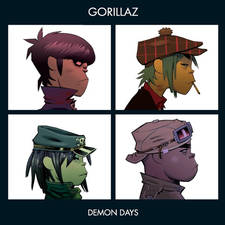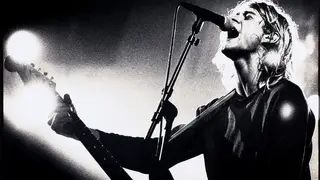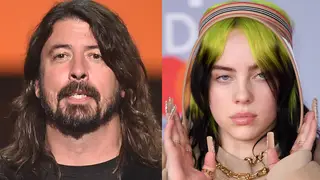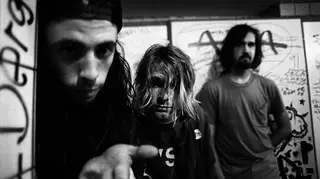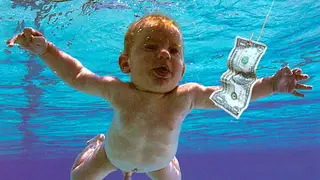The making of Nirvana's final video: "Kurt had such an incredible mind"
30 August 2024, 13:25

How I Made... Nirvana's Heart-Shaped Box video
Photographer and film director Anton Corbijn tells Radio X about his experience of working with Nirvana on their landmark clip for Heart-Shaped Box.
Listen to this article
At the start of 1993, Nirvana were all set to begin a new phase in their career. Their first album for a major label, Nevermind, was a huge international success on its release in September 1991 and grunge had become a music genre to be reckoned with.
The trio of Kurt Cobain, Krist Novoselic and Dave Grohl were faced with coming up with a follow-up to their generation-defining album - and they wanted to return to their alternative roots after a year of attention and publicity.
Produced by the no-nonsense musician Steve Albini, the band's third album In Utero was less polished than its predecessor, with a much more uncompromising sound that harked back to their early days on Seattle's Sub Pop label.
Read more on Nirvana
- 10 things you never knew about Nevermind by Nirvana
- What Nirvana's Lithium says about religion and mental health
- What did Nirvana play at their final gig before Kurt Cobain died?

Nirvana - Heart-Shaped Box (Director's Cut)
The song Heart-Shaped Box was first written in early 1992, but it tool about a year of work before Kurt Cobain was happy with it, giving the track its live debut in January 1993 at a show in Brazil. Right from the beginning, Heart-Shaped Box was intended to be the first single to be taken from the album, giving fans a first listen to the new material.
Originally, the video for Heart-Shaped Box was to have been shot by Kevin Kerslake, who had done the duty on clips for In Bloom and Come As You Are, but Cobain's wife Courtney Love had another suggestion.
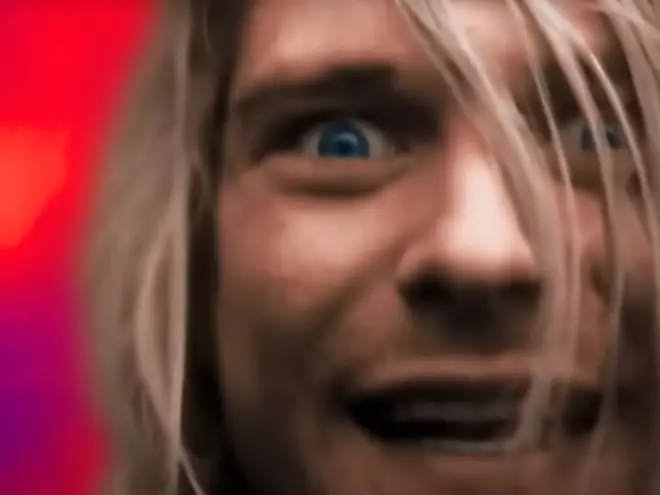
"I met Nirvana in the summer of 1993 when they had asked me to do a photoshoot with them," Dutch photographer and film-maker Anton Corbijn told Radio X.
"Courtney had lived in Liverpool for a time and she was friend of that whole scene: Julian Cope and Echo & The Bunnymen. I'd done videos for the Bunnymen and she told Kurt, who took a look at these videos and asked me to do the video for Heart-Shaped Box."
Corbijn's trademark black-and-white style was already familiar to music fans. He'd first come to the UK in the late 1970s, taking photos of artists like David Bowie and Siouxsie Sioux for the NME. His memorable shots of Joy Division, taken in London just a few months before their singer Ian Curtis took his own life, added to the mystique of the band. Soon Corbijn was shooting album covers for U2 and masterminding the music videos of Depeche Mode.

Echo & The Bunnymen - Bring on The Dancing Horses (Official Music Video)
The clips for Echo & The Bunnymen included Seven Seas and Bring On The Dancing Horses, each shot in colour against surrealistic backdrops that caught the eye of Courtney Love. Once hired, Corbijn soon received notes and drawings from Kurt.
"Kurt had such an incredible mind really," says Corbijn, "To not just write the songs, but also come up with the visuals, very detailed visuals. It was the one video that ideas-wise, I was the least involved with."
The storyboard for Heart-Shaped Box sees the three members of Nirvana sat by a hospital bed, in which lies a thin old man. We see the man tied to a crucifix in an abstract, garishly-coloured landscape, a red Santa Claus hat on top of his head. Nearby, deliberately fake-looking crows nod backwards and forwards.

"I added some some things," explains Corbijn. "The dead lady and the filth and stuff was my idea." A larger lady walks by wearing a body stocking that depicts muscles and internal organs - a simulation of the "Visible Woman" toy that adorns the cover of the In Utero album. There's also an eerie-looking child dressed as a druid, whose robes change from white to black.
While all these vivid images crawl across the screen, the three members of Nirvana perform the song; Kurt lurches towards the camera and back again, drifting in and out of focus - a typical Anton Corbijn technique.
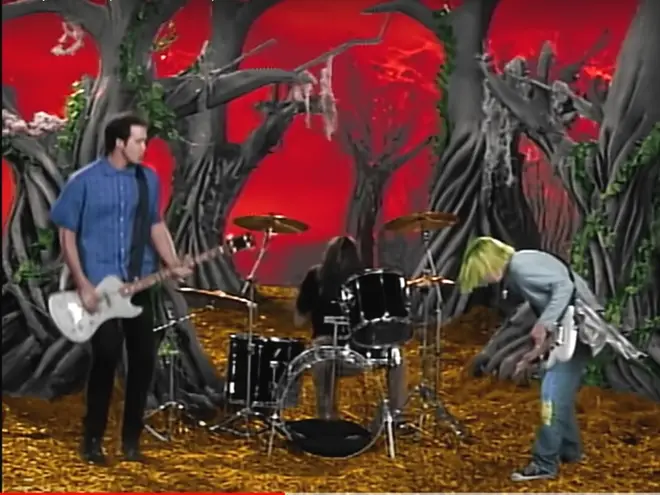
Unlike Corbijn's contemporary work with Depeche Mode, which was all shot on grainy black and white Super 8 film stock, Heart-Shaped Box was in lurid colour. Corbijn recalls that Kurt wanted to shoot the clip on old-fashioned Technicolor film, which would give the video a distinctive, rich look.
However, Technicolor was outdated kit in 1993 and would have been too expensive to try and locate. "The next best thing for me was to shoot it in colour, then transfer it to black and white and then colour every single frame. So it took, I think, four weeks or something in post-production to get done."
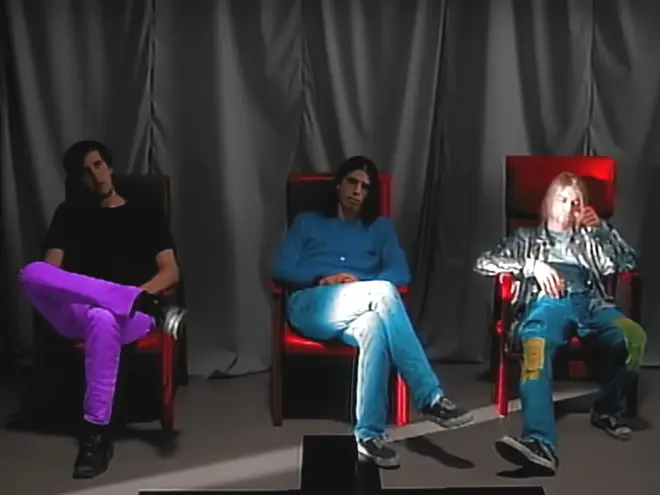
Once Kurt Cobain saw the effect, he was delighted - and wanted more. "Kurt realised that he could at one point have a blue shirt on and in the next frame have a green shirt on," says Corbijn. "I had to stop him because otherwise we would never finish the film!"
Originally Cobain had wanted legendary writer William S. Burroughs of Naked Lunch fame to play the old man, but the author turned down the role. After something of a search, the film-maker found a suitable actor.
Unfortunately the actor was genuinely suffering from an illness, which caused an incident on the set and an ambulance had to be called. "When they came to collect him, they arrived at this studio with a big cross set up in it... I think they felt something weird was going on.
"When I went to see him in hospital later, Kurt gave me some money to buy a boombox to have at the side of his bed."
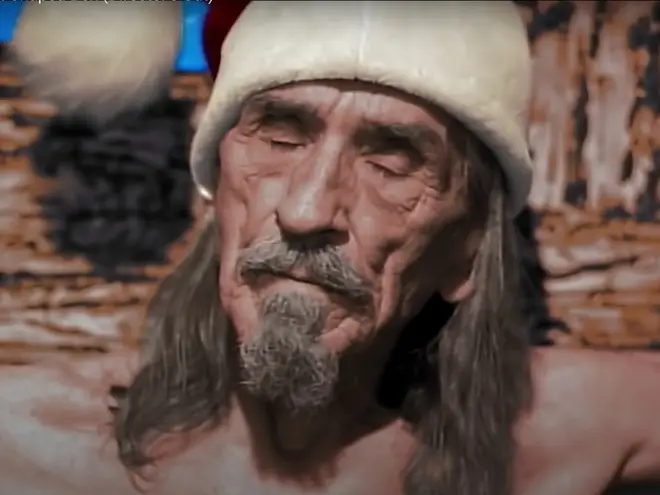
Although Corbijn didn't know it at the time, Heart-Shaped Box would be the last video that Kurt Cobain ever made. The track was a huge success, making the Top 5 in the UK and winning two MTV Video Music Awards.
A second single, All Apologies, didn't get a release in the US and the band were too busy touring to make a video. A third, Pennyroyal Tea, was due for release in April 1994, but fate intervened.
Anton Corbijn recalls: "Kurt asked me to do a video for Pennyroyal Tea, and I said no because I was so happy with Heart-Shaped Box, I said I'm gonna disappoint you with the next video because I can't do another video on that level. I don't think I have it in me."
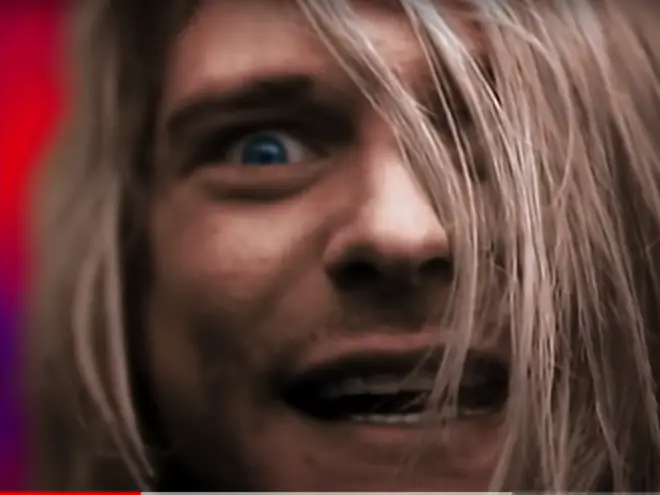
"Kurt said, Well, if you don't do it, I will never do another video again. And he never did. So in hindsight, I should have absolutely done that video."
Pennyroyal Tea was quickly withdrawn after the death by suicide of Cobain on 8th April 1994 - either because the single was deemed to be "cashing in" on the tragedy or the presence of the prophetic b-side I Hate Myself And I Want To Die.
As for Heart-Shaped Box, it remains one of the final pieces of work to come from Nirvana. It was the final song to be played at the very last Nirvana show on 1st March 1994 in Munich, Germany.

Squaring the Circle (The Story of Hipgnosis) | Official Red Band Trailer | Utopia
